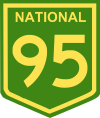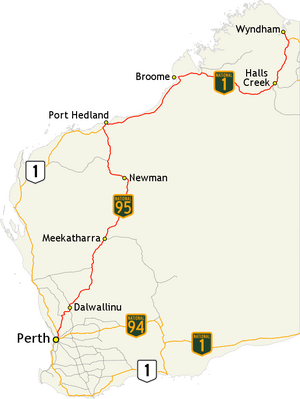Great Northern Highway
| Great Northern Highway | |||||||||||||||||||||||||||||||||||||||||||||||||||||||||||||||||||||||||||||||||||||||||||||||||||||||||||||||||||||||||||||||||||||||||||||||||||||||||||||||||||||||||||||||||||||||||||||||||||||||||||||||||||||||||||||||||||||||||||||||||||||||||||||||||||||||||||||||||||||||||||||||||
|---|---|---|---|---|---|---|---|---|---|---|---|---|---|---|---|---|---|---|---|---|---|---|---|---|---|---|---|---|---|---|---|---|---|---|---|---|---|---|---|---|---|---|---|---|---|---|---|---|---|---|---|---|---|---|---|---|---|---|---|---|---|---|---|---|---|---|---|---|---|---|---|---|---|---|---|---|---|---|---|---|---|---|---|---|---|---|---|---|---|---|---|---|---|---|---|---|---|---|---|---|---|---|---|---|---|---|---|---|---|---|---|---|---|---|---|---|---|---|---|---|---|---|---|---|---|---|---|---|---|---|---|---|---|---|---|---|---|---|---|---|---|---|---|---|---|---|---|---|---|---|---|---|---|---|---|---|---|---|---|---|---|---|---|---|---|---|---|---|---|---|---|---|---|---|---|---|---|---|---|---|---|---|---|---|---|---|---|---|---|---|---|---|---|---|---|---|---|---|---|---|---|---|---|---|---|---|---|---|---|---|---|---|---|---|---|---|---|---|---|---|---|---|---|---|---|---|---|---|---|---|---|---|---|---|---|---|---|---|---|---|---|---|---|---|---|---|---|---|---|---|---|---|---|---|---|---|---|---|---|---|---|---|---|---|---|---|---|---|---|---|---|---|---|---|---|---|---|---|---|---|---|---|---|---|---|---|---|---|---|
  
|
|||||||||||||||||||||||||||||||||||||||||||||||||||||||||||||||||||||||||||||||||||||||||||||||||||||||||||||||||||||||||||||||||||||||||||||||||||||||||||||||||||||||||||||||||||||||||||||||||||||||||||||||||||||||||||||||||||||||||||||||||||||||||||||||||||||||||||||||||||||||||||||||||
| map | |||||||||||||||||||||||||||||||||||||||||||||||||||||||||||||||||||||||||||||||||||||||||||||||||||||||||||||||||||||||||||||||||||||||||||||||||||||||||||||||||||||||||||||||||||||||||||||||||||||||||||||||||||||||||||||||||||||||||||||||||||||||||||||||||||||||||||||||||||||||||||||||||
| Basic data | |||||||||||||||||||||||||||||||||||||||||||||||||||||||||||||||||||||||||||||||||||||||||||||||||||||||||||||||||||||||||||||||||||||||||||||||||||||||||||||||||||||||||||||||||||||||||||||||||||||||||||||||||||||||||||||||||||||||||||||||||||||||||||||||||||||||||||||||||||||||||||||||||
| Operator: | Main Roads | ||||||||||||||||||||||||||||||||||||||||||||||||||||||||||||||||||||||||||||||||||||||||||||||||||||||||||||||||||||||||||||||||||||||||||||||||||||||||||||||||||||||||||||||||||||||||||||||||||||||||||||||||||||||||||||||||||||||||||||||||||||||||||||||||||||||||||||||||||||||||||||||||
| Start of the street: |
Morrison Road Midland ( Perth ) ( WA ) ( 31 ° 53 ′ S , 116 ° 0 ′ E ) |
||||||||||||||||||||||||||||||||||||||||||||||||||||||||||||||||||||||||||||||||||||||||||||||||||||||||||||||||||||||||||||||||||||||||||||||||||||||||||||||||||||||||||||||||||||||||||||||||||||||||||||||||||||||||||||||||||||||||||||||||||||||||||||||||||||||||||||||||||||||||||||||||
| End of street: |
Wyndham ( WA ) ( 15 ° 28 ′ S , 128 ° 6 ′ E ) |
||||||||||||||||||||||||||||||||||||||||||||||||||||||||||||||||||||||||||||||||||||||||||||||||||||||||||||||||||||||||||||||||||||||||||||||||||||||||||||||||||||||||||||||||||||||||||||||||||||||||||||||||||||||||||||||||||||||||||||||||||||||||||||||||||||||||||||||||||||||||||||||||
| Overall length: | 3204 km | ||||||||||||||||||||||||||||||||||||||||||||||||||||||||||||||||||||||||||||||||||||||||||||||||||||||||||||||||||||||||||||||||||||||||||||||||||||||||||||||||||||||||||||||||||||||||||||||||||||||||||||||||||||||||||||||||||||||||||||||||||||||||||||||||||||||||||||||||||||||||||||||||
|
States : |
|||||||||||||||||||||||||||||||||||||||||||||||||||||||||||||||||||||||||||||||||||||||||||||||||||||||||||||||||||||||||||||||||||||||||||||||||||||||||||||||||||||||||||||||||||||||||||||||||||||||||||||||||||||||||||||||||||||||||||||||||||||||||||||||||||||||||||||||||||||||||||||||||
| Great Northern Highway in the north | |||||||||||||||||||||||||||||||||||||||||||||||||||||||||||||||||||||||||||||||||||||||||||||||||||||||||||||||||||||||||||||||||||||||||||||||||||||||||||||||||||||||||||||||||||||||||||||||||||||||||||||||||||||||||||||||||||||||||||||||||||||||||||||||||||||||||||||||||||||||||||||||||
|
Course of the road
|
|||||||||||||||||||||||||||||||||||||||||||||||||||||||||||||||||||||||||||||||||||||||||||||||||||||||||||||||||||||||||||||||||||||||||||||||||||||||||||||||||||||||||||||||||||||||||||||||||||||||||||||||||||||||||||||||||||||||||||||||||||||||||||||||||||||||||||||||||||||||||||||||||
The Great Northern Highway is a trunk road in the north and west of the Australian state of Western Australia . It connects the state capital, Perth , with its northernmost port city, Wyndham . At 3,204 km, it is the longest highway in Australia. Most of it is two-lane (with the exception of a few single-lane bridges in the Kimberley region ).
It is one of the most remote paved roads in the world: you can drive hundreds of kilometers without even finding a rest stop. Economically, it is a vital link in that it allows access to the resource-rich regions of Pilbara and Kimberley. In these areas, all major industries, such as mining and tourism , depend on the highway.
history
Prior to the 1960s, the Great Northern Highway consisted primarily of a series of driveways connecting Perth to rural areas (with the exception of a few higher quality sections of the Wheatbelt ). Nonetheless, several things happened in the 1950s that accelerated the development of the highway. The federal government's beef roads plan encouraged road construction in the Kimberley, which meant trucks could move cattle to the ports. A paved, single-lane link between Broome and Derby was completed there in the 1960s, as were a number of access roads to Wyndham Harbor .
Meanwhile, iron ore was discovered in the Pilbara region . This began the major improvements to the highway that took place in both the 1960s and 1970s - the section between Meekatharra and Newman opened in 1978 after being expanded to two lanes. In the same year, the road between Halls Creek and Wyndham was expanded to two lanes, soon after (1981) the 476 km long route between Port Hedland and Broome was opened.
Work accelerated in the 1980s as part of Australia's bicentenary road works program . In 1986, the expanded line between Fitzroy Crossing and Halls Creek was opened after five years of work. This marked the completion of the Highway 1 route, a route that included the already completed North-West Coastal Highway / Brand Highway connection (the coastal highway) between Perth and Port Hedland . Between Newman and Port Hedland, the Great Northern Highway was replaced by a new route in the 1980s that ran west of the original route. The latter had previously passed through Nullagine and Marble Bar . The new connection between Newman and Port Hedland was completed in 1989; this event marked the completion of the fortification of the Great Northern Highway (the inland route) and the completion of the federally funded National Highway across Australia.
course
The Great Northern Highway branches off in Midland , a northeastern suburb of Perth, from the Great Eastern Highway (R1) to the north. For about 37 km it runs along the east bank of the Swan River . In Muchea , the Brand Highway (R1) branches off to the northwest, while the Great Northern Highway continues to the north-northeast through land interspersed with salt lakes via Mount Magnet , Meekatharra to Newman.
In Newman the road turns west-north-west and after another 120 km leads back north. Approx. 30 km before Port Hedland, the North West Coastal Highway (R1) flows from the southwest, and the Great Northern Highway continues its way along the coast to just before Broome. Broome itself is connected with a 24 km long cul-de-sac, the Broome Road , as is Derby further east with the 41 km long Derby Highway .
The Great Northern Highway runs east through the interior of the country on the southern edge of the Kimberley region, reaches Fitzroy Crossing and curves over southeast and east to northeast until it reaches Halls Creek. Shortly before, or in Halls Creek, important outback slopes from the Northern Territory flow , the Tanami Road (S5) and the Duncan Road (R80).
The Great Northern Highway leads from Halls Creek to the north, almost parallel to the border with the Northern Territory, but at a distance of about 50-100 km from this. The Victoria Highway (N1) coming from the east is connected to the west of Kununurra , and a few kilometers north of it is the Gibb River Road coming from the west , an outback track that opens up the center of the Kimberley region. The Great Northern Highway ends just under 50 km further in the port city of Wyndham.
numbering
-
 from Midland ( Perth ) to the junction of the Brand Highway at Muchea
from Midland ( Perth ) to the junction of the Brand Highway at Muchea -
 from Midland ( Perth ) to the junction of the North West Coastal Highway at Port Hedland
from Midland ( Perth ) to the junction of the North West Coastal Highway at Port Hedland
-
 from the junction of the North West Coastal Highway at Port Hedland to the junction of the Victoria Highway at Kununurra
from the junction of the North West Coastal Highway at Port Hedland to the junction of the Victoria Highway at Kununurra
- no number from the junction of the Victoria Highway at Kununurra to Wyndham
tourism
The highway section immediately north of Perth runs along the eastern Swan Valley , which attracts a large number of visitors with its numerous wineries , breweries and restaurants . Further north are the gorges and the associated terrain of the Karijini National Park and the Pilbara mines inland; but the alternatively possible North West Coastal Highway between Perth and Port Hedland offers access to the Indian Ocean and its numerous natural beauties and is therefore preferred by tourists.
In the Kimberley region, the highway can be used to reach many natural attractions alongside the road, such as Purnululu National Park , Wolfe Creek Crater , Gibb River Road and Broome . It is also part of the route to the Northern Territory . Especially between April and October, when the weather is cooler, these attractions attract local, national and international tourists, many of whom use caravans made up of four-wheel drive jeeps.
Hazard potential
The Great Northern Highway threatens travelers with a number of serious hazards , both seasonal and recent. Stray cattle and other grazing animals are sometimes dangerous and not uncommon in the Kimberley and Pilbara regions. Also kangaroos and wedge-tailed eagle is a hazard, even though they are smaller, because wedge-tailed eagle often sit motionless in the street, after they have gorged on run over animals. Night drives should be avoided if possible; Good bull bars and headlights can also help. The danger, however, remains.
Another important danger is that of flooding , as torrential rains can occur between November and May in the two regions mentioned. The dry Willare Crossing dam over the Fitzroy River is designed to withstand enormous floods. However, in the early 1980s, important parts of the dam were washed away several times by seasonal floods. To alleviate the problem, two new bridges were built in 1985 to allow increased water flow without flooding the dam. Then, less than six months later, cyclone Hektor produced 70% more water than expected - four to five kilometers of the newly built section was washed away, leaving a bridge with no support pillars. All damage was cleared away and the dam has withstood the water ever since, despite further flooding.
In other places it is not uncommon for the street to be meters deep under water. Just ten centimeters of water is enough to cause a serious accident at high speed. The golden rule is that stretches that are not safe to walk should not be driven.
Web links
source
Steve Parish: Australian Touring Atlas . Steve Parish Publishing. Archerfield QLD 2007. ISBN 978-1-74193-232-4 . Pp. 77, 78, 82, 84, 85, 87, 88, 89, 90


